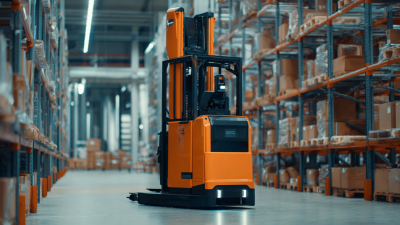10 Proven Benefits of Robotic Process Automation Software for Boosting Business Efficiency
 In the era of digital transformation, businesses are increasingly turning to innovative technologies to gain a competitive edge. One such technology that has garnered widespread attention is robotic process automation (RPA) software. According to a 2021 report by Gartner, the RPA market is projected to reach $2.9 billion by 2025, highlighting the growing reliance on automation to enhance operational efficiency. This surge in adoption is driven by the software's ability to streamline repetitive tasks, minimize errors, and free up valuable human resources for more strategic initiatives.
In the era of digital transformation, businesses are increasingly turning to innovative technologies to gain a competitive edge. One such technology that has garnered widespread attention is robotic process automation (RPA) software. According to a 2021 report by Gartner, the RPA market is projected to reach $2.9 billion by 2025, highlighting the growing reliance on automation to enhance operational efficiency. This surge in adoption is driven by the software's ability to streamline repetitive tasks, minimize errors, and free up valuable human resources for more strategic initiatives.
Industry expert Andrew Burgess, a noted authority on automation technologies, emphasizes the transformative power of RPA, stating, "Robotic process automation software not only boosts productivity but also accelerates businesses towards their digital objectives." His insights underscore the importance of leveraging such software to drive meaningful change within organizations. As companies continue to navigate the complexities of modern business landscapes, the implementation of RPA software emerges as a vital strategy for maximizing efficiency and achieving sustainable growth.
Improving Operational Efficiency: Statistics on Time Savings from RPA Implementation
Robotic Process Automation (RPA) has emerged as a revolutionary solution for businesses aiming to enhance operational efficiency. Statistics show that companies implementing RPA can experience significant time savings. For instance, many organizations report reductions in processing time of up to 60%, freeing employees from mundane tasks and allowing them to focus on more strategic initiatives. This efficiency leads not only to increased productivity but also to a quicker response to market changes, enabling businesses to stay ahead of the competition.
Moreover, the integration of RPA can lead to improved accuracy in task execution. By minimizing human error in repetitive processes, companies can further streamline operations. Studies indicate that firms utilizing RPA have seen a decrease in error rates by approximately 30-50%. This enhanced accuracy contributes to better customer satisfaction, as clients receive prompt and error-free service. Ultimately, the implementation of RPA not only yields impressive time savings but also transforms how businesses operate by fostering a culture of continuous improvement and innovation.
10 Proven Benefits of Robotic Process Automation Software for Boosting Business Efficiency - Improving Operational Efficiency: Statistics on Time Savings from RPA Implementation
| Benefit | Description | Time Savings | Efficiency Improvement (%) |
|---|---|---|---|
| Automated Data Entry | Reduction in manual data entry tasks. | 15 hours/week | 40% |
| Enhanced Compliance | Improved adherence to regulations and policies. | 10 hours/week | 30% |
| Quicker Invoice Processing | Automated invoice handling and approval. | 20 hours/week | 50% |
| Streamlined Customer Service | Faster responses to customer inquiries. | 12 hours/week | 35% |
| Reduction of Operational Costs | Minimized labor costs through automation. | 8 hours/week | 25% |
| Improved Data Accuracy | Reduction in human errors in data management. | 5 hours/week | 20% |
| Increased Employee Satisfaction | Employees focus on more strategic tasks. | 7 hours/week | 15% |
| Scalability of Processes | Easier to scale operations as needed. | 4 hours/week | 10% |
| Faster Business Insights | Real-time data processing for better decision-making. | 6 hours/week | 18% |
| 24/7 Operation Capability | Operations can run without downtime. | Unlimited | Variable |
Cost Reduction Insights: How RPA Can Decrease Business Operational Costs by Up to 30%
Robotic Process Automation (RPA) offers significant benefits for businesses looking to enhance their efficiency while simultaneously reducing operational costs. By automating routine tasks, companies can decrease their operational expenses by up to 30%, freeing up resources that can be redirected towards more strategic initiatives. This cost reduction is particularly crucial in a competitive market where every dollar saved contributes to the bottom line.
The RPA market has gained traction as more organizations leverage this technology for various applications, including human capital management. By automating processes such as talent matching and application tracking, companies can optimize their workforce management and improve hiring outcomes. Furthermore, the rise of hyper automation, which integrates advanced technologies like AI into automated processes, underscores the trend towards more sophisticated automation solutions. As these trends continue, businesses will not only streamline operations but also foster innovation and adaptability in an ever-evolving landscape.

Enhancing Accuracy: The Impact of RPA on Minimizing Human Error in Repetitive Tasks
Robotic Process Automation (RPA) has emerged as a revolutionary tool in the business landscape, particularly in its ability to enhance accuracy by minimizing human error in repetitive tasks. Traditional manual processes are often prone to inaccuracies due to fatigue, oversight, and the sheer volume of work. By implementing RPA, organizations can automate these mundane tasks with precision, ensuring consistent and error-free execution. This not only leads to improved data integrity but also frees up valuable human resources to focus on higher-value tasks that require creativity and strategic thinking.
Moreover, RPA tools are designed to learn and adapt, which further reduces the likelihood of human error. The algorithms used in RPA can process information rapidly and accurately, identifying anomalies that might go unnoticed in manual systems. This capability not only enhances operational efficiency but also boosts compliance with regulatory standards, as automated processes provide a clear audit trail. Consequently, businesses that adopt RPA not only experience improved accuracy but also gain a competitive edge through higher reliability and better decision-making driven by quality data.
Boosting Employee Productivity: Data on Increased Output Through Automation of Mundane Tasks
The automation of mundane tasks through Robotic Process Automation (RPA) software has shown significant potential in boosting employee productivity across various sectors. By taking over repetitive and time-consuming processes, RPA enables employees to focus on more strategic tasks that require creativity and critical thinking. According to industry reports, organizations utilizing RPA have witnessed productivity increases of up to 30%. This enhancement in output translates directly into improved overall efficiency, allowing companies to achieve their goals with greater speed and accuracy.

Moreover, the integration of Artificial Intelligence (AI) technologies further amplifies the benefits of automation. A recent study indicates that over 70% of executives believe AI-driven automation will redefine business processes by 2025, resulting in a notable shift in the workforce landscape. Employees working alongside AI assistants report heightened levels of focus and motivation, leading to better performance and innovation. As companies harness the dual power of RPA and AI, the potential for transforming employee productivity becomes increasingly evident, marking a new era in operational excellence.
Transforming Customer Experience: RPA's Role in Accelerating Response Times and Service Delivery
Robotic Process Automation (RPA) is revolutionizing the way businesses interact with their customers by significantly enhancing response times and service delivery. By automating repetitive tasks such as data entry, processing requests, and handling customer inquiries, RPA allows organizations to allocate human resources to more complex interactions. This shift not only improves the efficiency of operations but also enables businesses to respond to customer needs promptly, fostering a more positive customer experience.
Moreover, RPA systems can operate 24/7 without the limitations of human labor, ensuring that customer queries are addressed in real-time, even outside regular business hours. This continuous availability leads to reduced wait times for customers, ultimately culminating in higher satisfaction rates. As companies leverage RPA to streamline their processes, they are not only enhancing efficiency but also building stronger relationships with their customers through timely and effective service delivery. The integration of RPA into customer service strategies signals a commitment to improving customer experience and operational excellence.
Impact of Robotic Process Automation on Business Efficiency
Related Posts
-

Unleashing Digital Transformation: The Ultimate Guide to Robotic Process Automation Software
-

2025 Top 10 Robotic Solutions Revolutionizing Automation with Over 50 Percent Industry Growth
-

Discover the Future of Companionship: How Robot Pets are Changing Lives
-

Unlocking the Future of Work with Robotic Process Automation for Everyday Tasks
-

Revolutionizing Supply Chains: How Warehouse Robots Are Shaping the Future of Logistics
-

Exploring Robotic Process Automation Tools at the 2025 China 138th Canton Fair Insights and Innovations
Smart Robotics brand movie
Watch video


